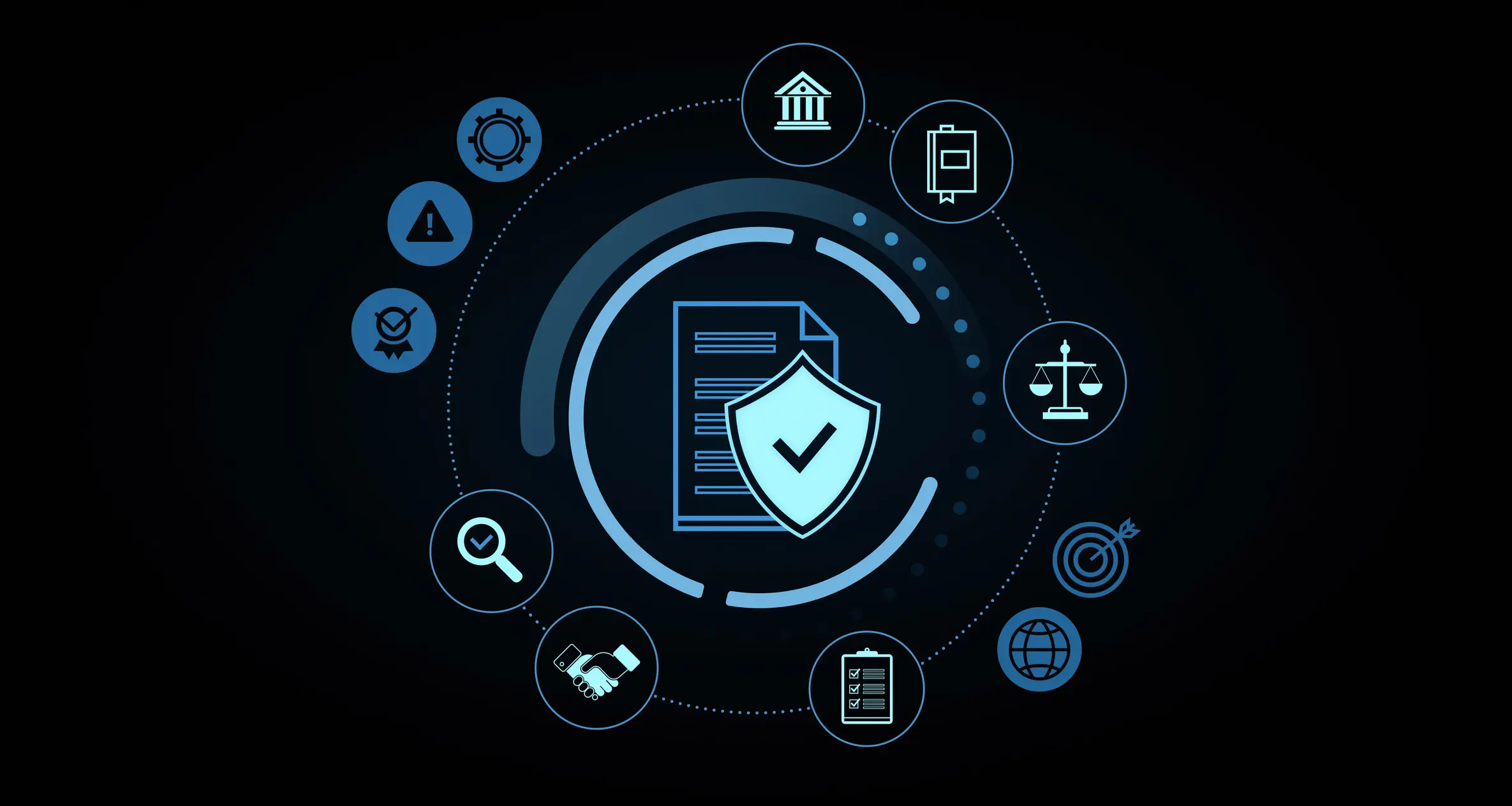Table of Contents
The cybersecurity landscape has become a battleground where large enterprises, particularly in healthcare, manufacturing, energy, utilities, retail, CPGs, etc, face sophisticated threats. Cybercrime and the proliferation of malicious techniques have escalated to levels demanding immediate action. Organizations adopting expansive technology stacks and enterprise integrations must evaluate and strengthen their defenses to stay secure. These companies must stay abreast of the latest enterprise cybersecurity statistics, understand the critical need for cybersecurity assessments, and adopt essential strategies to fortify their systems in preparation for 2025.
We aim to help these organizations understand the benefits of a proactive cybersecurity approach and the urgency of conducting cybersecurity assessments to secure critical infrastructure and sensitive data going into the new year.
Current Landscape of Cybersecurity in 2024
According to Cybersecurity Ventures’ report, the financial toll of cybercrime has soared, with estimates pointing to losses in trillions of dollars globally. The volume and scale of cyberattacks have also grown significantly across all sectors, with attacks becoming more frequent and damaging.
Industries like healthcare, manufacturing, utilities, CPGs, and retail face unique vulnerabilities due to their reliance on interconnected systems, critical infrastructure, and vast amounts of data. These factors make them prime targets for enterprise cyber threats. Common threat vectors include data breaches, phishing, ransomware, social engineering, and supply chain attacks, exploiting specific weaknesses and posing significant risks and potential losses.
Manufacturing companies face risks in their operational technology (OT) and Internet of Things (IoT) integrations. Cybercriminals target these systems to halt production, disrupt operational processes, and cause significant operational damage. Similarly, energy and utility organizations are increasingly targeted due to their strategic importance, economic value, and the sensitive nature of their SCADA (Supervisory Control and Data Acquisition) systems, which control critical infrastructure. In the retail and CPG sector, cyber criminals seek out vulnerabilities in point of sale (POS) systems and exploit weaknesses in customer databases, leading to significant breaches of sensitive information.
The threats from cyber attacks are constantly evolving, so cybersecurity measures must evolve, too. Rather than focusing on which technology products can provide the best defense against these threats, enterprise cybersecurity must now be proactive. Organizations should adopt processes that safeguard digital assets and ensure data privacy, regulation compliance, and operational reliability.
The Necessity of Cybersecurity Assessments for Enterprises
The increasing cybersecurity threats posed by bad actors make security assessments a necessity. A cybersecurity assessment is a diagnostic tool for identifying weaknesses across an enterprise’s technology stack, from network vulnerabilities to application-level threats. It’s essential for organizations operating complex CRMs, ERPs, and AI-driven systems.
A comprehensive enterprise cybersecurity assessment evaluates critical components and helps you pinpoint vulnerabilities, determine the potential impact of a breach, and implement targeted security measures.
Key Components of a Comprehensive Cybersecurity Assessment
A robust cybersecurity assessment evaluates five critical areas—network security, data protection, system configurations, regulatory compliance, and access control management. Each element ensures enterprise defenses are resilient against current and emerging threats.
-
- Network security assessment analyzes firewall integrity, intrusion detection systems, and network traffic for anomalies.
-
- Data protection assessment ensures that data encryption, backup systems, and disaster recovery plans are in place to protect sensitive information.
-
- System configurations assessment reviews system settings and configurations for weaknesses that may provide entry points for bad players.
-
- Compliance assessment assesses adherence to regulations, especially for sectors like energy and utilities, which have stringent compliance standards.
-
- Access control assessment verifies that user permissions are tightly managed, with policies enforcing multifactor authentication (MFA) and least-privilege access.
It’s imperative and best practice for a business to conduct an annual enterprise cybersecurity assessment covering every element. Regular assessments are essential to maintain resilience as you expand your technology stacks and integrate different solutions.
Current Cybersecurity Recommendations for Enterprises.
Adopt a Zero-Trust Architecture
Many enterprises are adopting a zero-trust architecture in response to rising insider threats and phishing attacks. Zero-trust operates on the principle of never assuming any internal or external connection is trustworthy. This approach minimizes the risks associated with lateral movement within networks and reduces the likelihood of widespread compromise in case of an initial breach.
Enhance Endpoint and Network Security
Securing endpoints and networks is essential for preventing malware from entering the network. Endpoint security measures like device management and segmentation are vital for industries heavily reliant on IoT devices and remote connectivity. Also, network security solutions, like intrusion detection and next-generation firewalls, help identify and neutralize threats in real time.
Implement Multi-Factor Authentication (MFA) and Access Control Management
Multi-factor authentication (MFA) is one of the most effective deterrents against unauthorized access. When combined with stringent access control management, MFA ensures that only authorized personnel can access sensitive systems and data. Also, this protocol enforces least privilege access, granting users only the permissions they need for their roles.
Regular Patching and Vulnerability Management
Enterprises often struggle with patch management, which is essential for closing vulnerabilities. Automated patch management solutions can help you ensure that every software patch is deployed promptly, reducing the risk of exploitation from known vulnerabilities.
Investment in Employee Cybersecurity Training
The human factor remains one of the most exploitable areas in enterprise security. Regular cybersecurity training sessions help employees recognize phishing attempts, understand data handling protocols, and respond swiftly to potential incidents. Training should be ongoing, with real-time simulations preparing employees for threats.
Preparing for 2025: Why Conducting a Cybersecurity Assessment Now is Crucial
The Growing Complexity of Cyber Threats
Cyber threats are becoming more complex, with attackers using AI tools and automation to bypass traditional defenses. Enterprises must understand that cyber attacks in 2025 will likely involve more sophisticated tactics. You need to adopt preventive measures and proactive assessments of current security measures to identify vulnerabilities before attackers can exploit them.
Securing New Technologies and Expanding Digital Footprints
As you adopt more AI-driven tools, cloud integrations, and digital solutions, you expand your digital footprint, creating new potential vulnerabilities. Enterprise cybersecurity assessments evaluate these technologies within the larger infrastructure, ensuring they don’t inadvertently introduce new risks.
Compliance Requirements and Regulatory Standards for 2025
Data protection and cybersecurity regulations continue to evolve, with sectors like energy, utilities, retail, manufacturing, and CPGs facing additional scrutiny. A cybersecurity assessment helps you ensure compliance with new standards, reducing the risk of penalties and reinforcing customer trust.
Take Proactive Steps Now to Secure Your Systems and Processes.
Cybersecurity readiness is a non-negotiable priority for at-risk enterprises; thus, an immediate and thorough response is needed. Taking proactive steps now ensures you can operate more securely and meet the challenges of 2025 with robust defenses and minimized risks.
You can lay the groundwork for securing your vital systems and customer trust with proactive cybersecurity assessments. These vulnerability assessments provide a significant advantage for the year ahead.
Take action now. Reach out to rSTAR Technologies for a comprehensive enterprise cybersecurity assessment, and prepare to face the future confidently.






